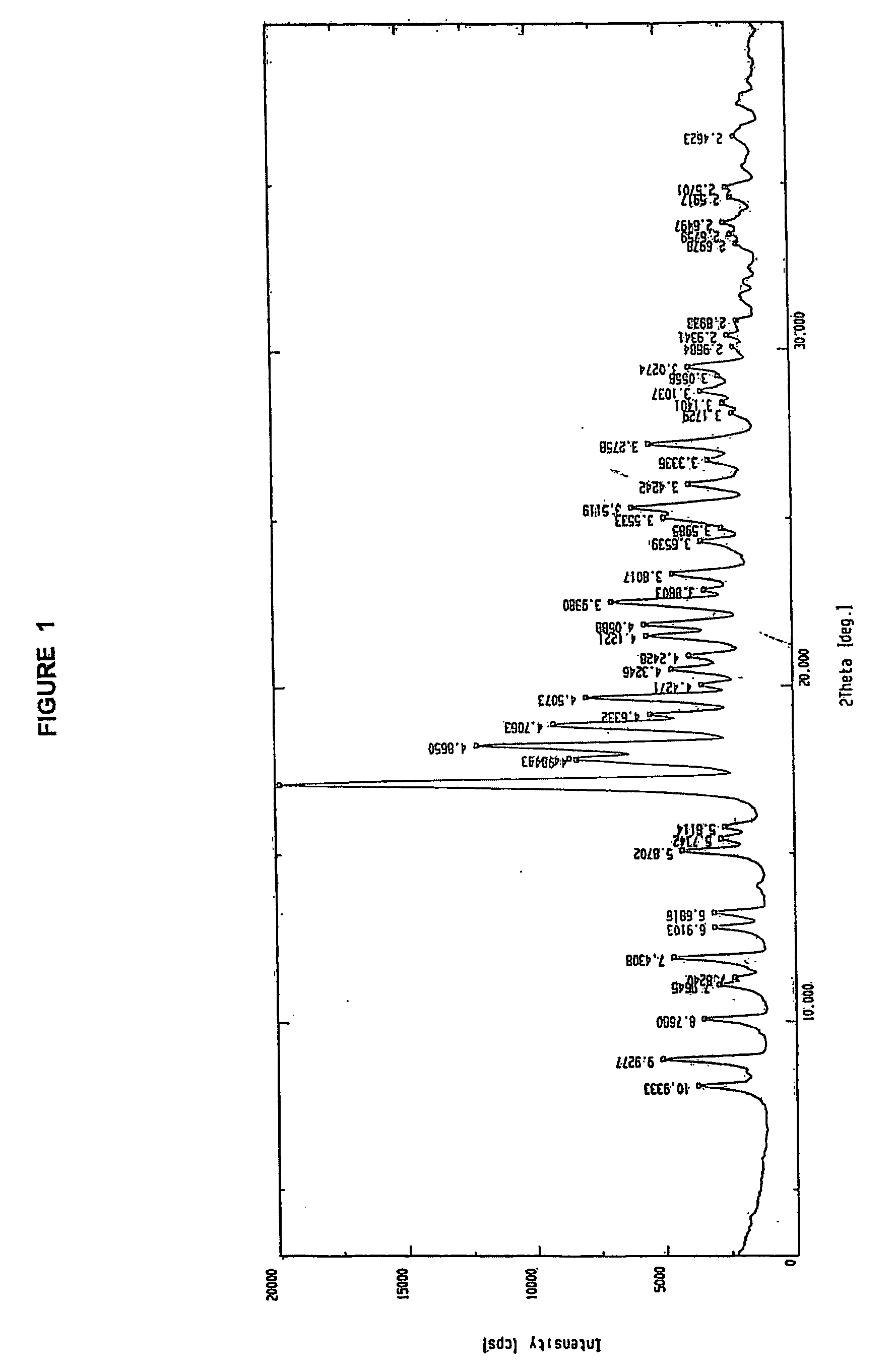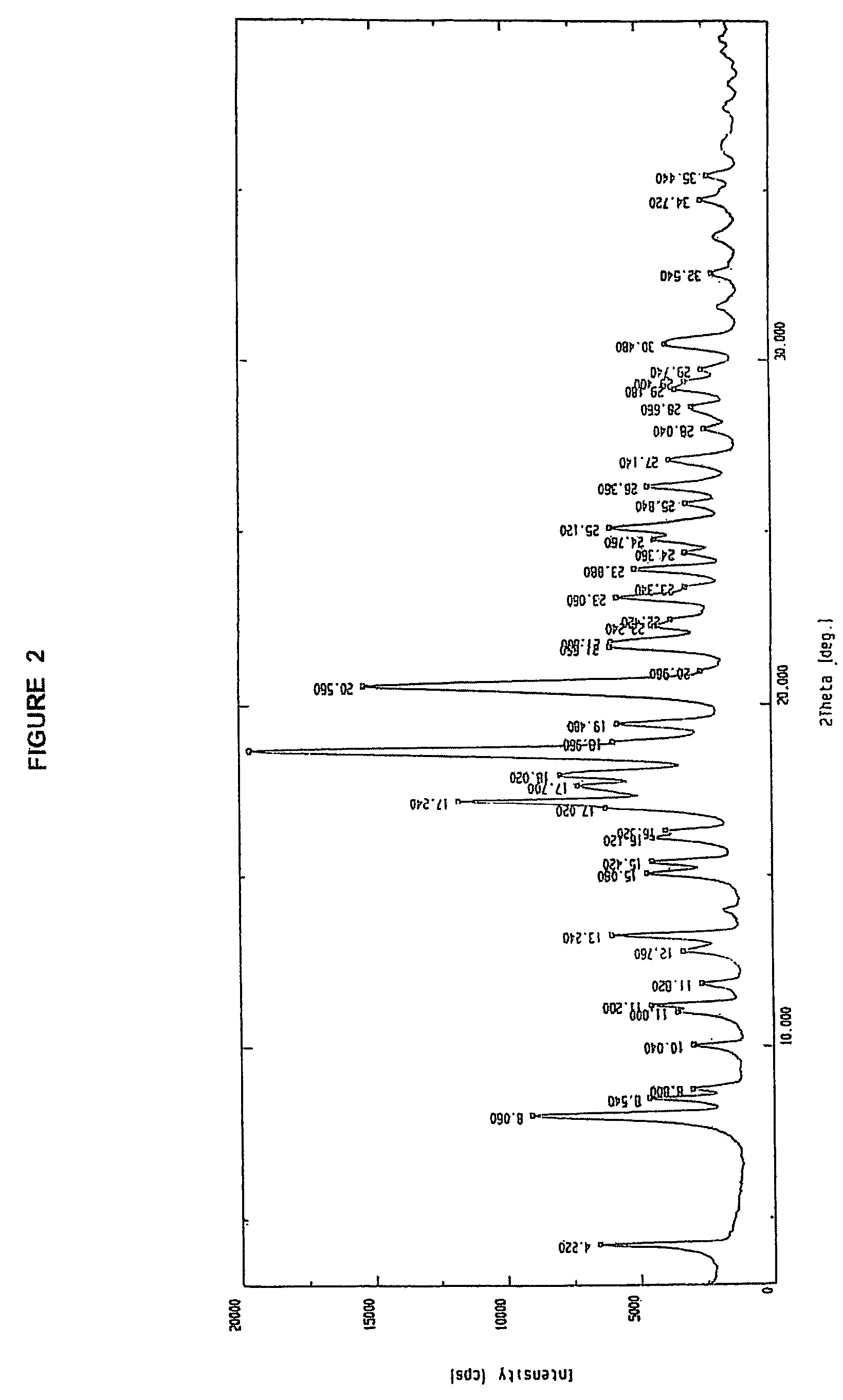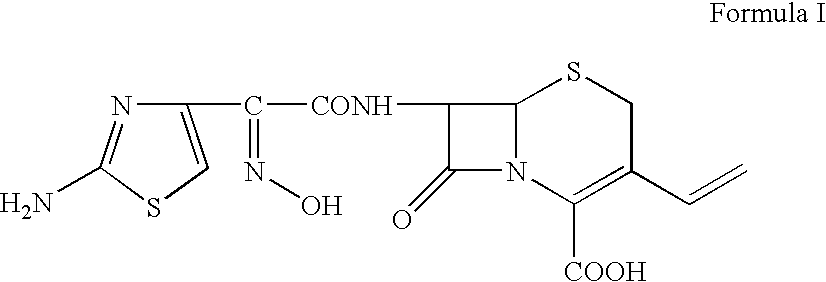Process for the preparation of cefdinir
a cefdinir and process technology, applied in the field of improvement, can solve the problems of unsuitable industrial production scale production, high cost of process, and difficult to achieve the effect of improving the quality of cefdinir,
- Summary
- Abstract
- Description
- Claims
- Application Information
AI Technical Summary
Benefits of technology
Problems solved by technology
Method used
Image
Examples
example 1
7β-[2-(2-aminothiazol-4-yl)-2(Z)-trityloximino)acetamido]-3-vinyl-3-cephem-4-carboxylic acid, sulfuric acid salt, 3 N, N-dimethylacetamide solvate
[0021] 7-amino-3-vinyl-3-cephem-4-carboxylic acid (10 g) was added to N, N-dimethylacetamide (100 ml) followed by the addition of 2-benzothiazolyl (Z)-2-(2-aminothiazol-4-yl)-2-trityloxyiminothioacetate (28.2 g). The reaction mixture was cooled to 10-15° C. and tri-n-butylamine (17.2 g) was added in 20-30 minutes at 10-15° C. The reaction mixture was stirred at ambient temperature for 6-7 hours for completion of reaction. Thereafter, it was cooled to −10° C. and sulfuric acid (13.4 g) was added dropwise in 30 minutes below 0° C. Toluene (100 ml) was added to the reaction mixture under cooled condition followed by the addition of hexane (100 ml). Temperature of the reaction mixture was raised to 35-40° C. for crystallization to take place. The temperature was maintained at 35-40° C. for 30 minutes. The precipitate thus obtained was filtere...
example2
7β-[2-(2-aminothiazol-4-yl)-2(Z)-(trityoloxyimino)acetamido]-3-vinyl-3-cephem-4-carboxylic acid, methanesulfonic acid salt, 3 N, N-dimethylacetamide solvate
[0028] 7-amino-3-vinyl-3-cephem-4-carboxylic acid (10 g) was added to N, N-dimethylacetamide (150 ml) followed by the addition of 2-benzothiazolyl (Z)-2-(2-aminothiazol-4-yl)-2-trityloxyiminothioacetate (26.8 g). Tri-n-butylamine (16.78 g) was added to the reaction mixture at 10-15° C. The reaction mixture was stirred at room temperature for 7-8 hours for completion of reaction. Anhydrous methanesulfonic acid (13 g) was added to the reaction mass below 10° C. 15-20 min followed by the addition of diisopropyl ether (150 ml). The reaction mixture was warmed to 30-35° C. for crystallization to take place. The precipitate thus obtained was filtered and washed with diisopropyl ether and then dried to obtain 38.5 g (yield: 96%) of the title compound as off-white crystals. [0029] HPLC purity: 99.3%, m.p.=125-127° C., N, N-Dimethylaceta...
example 3
7β-[2-(2-aminothiazol-4-yl)-2(Z)-(trityoloxyimino)acetamido]-3-vinyl-3-cephem-4-carboxylic acid, methanesulfonic acid salt, 2 N, N-dimethylacetamide solvate
[0033] 7-amino-3-vinyl-3-cephem-4-carboxylic acid (15 g) was added to N, N-dimethylacetamide (225 ml) followed by the addition of 2-benzothiazolyl (Z)-2-(2-aminothiazol-4-yl)-2-trityloxyiminothioacetate (45 g). Tri-n-butylamine (27 g) was added to the reaction mixture at 10-15° C. The reaction mixture was stirred at 25 to 30° C. for 7-8 hours for completion of reaction. Anhydrous methanesulfonic acid (210 g) was added to the reaction mass below 0° C. in 15-20 min followed by the addition of diisopropyl ether (450 ml). The reaction mixture was warmed to 38-40° C. and stirred for 45 minutes for crystallization to take place. The suspension was then cooled to 25 to 30° C. and further stirred for one hour. The precipitate thus obtained was filtered, washed with diisopropyl ether and then dried to obtain 56.7 g (yield: 94.2%) of the ...
PUM
| Property | Measurement | Unit |
|---|---|---|
| temperature | aaaaa | aaaaa |
| temperature | aaaaa | aaaaa |
| temperature | aaaaa | aaaaa |
Abstract
Description
Claims
Application Information
 Login to View More
Login to View More - R&D
- Intellectual Property
- Life Sciences
- Materials
- Tech Scout
- Unparalleled Data Quality
- Higher Quality Content
- 60% Fewer Hallucinations
Browse by: Latest US Patents, China's latest patents, Technical Efficacy Thesaurus, Application Domain, Technology Topic, Popular Technical Reports.
© 2025 PatSnap. All rights reserved.Legal|Privacy policy|Modern Slavery Act Transparency Statement|Sitemap|About US| Contact US: help@patsnap.com



